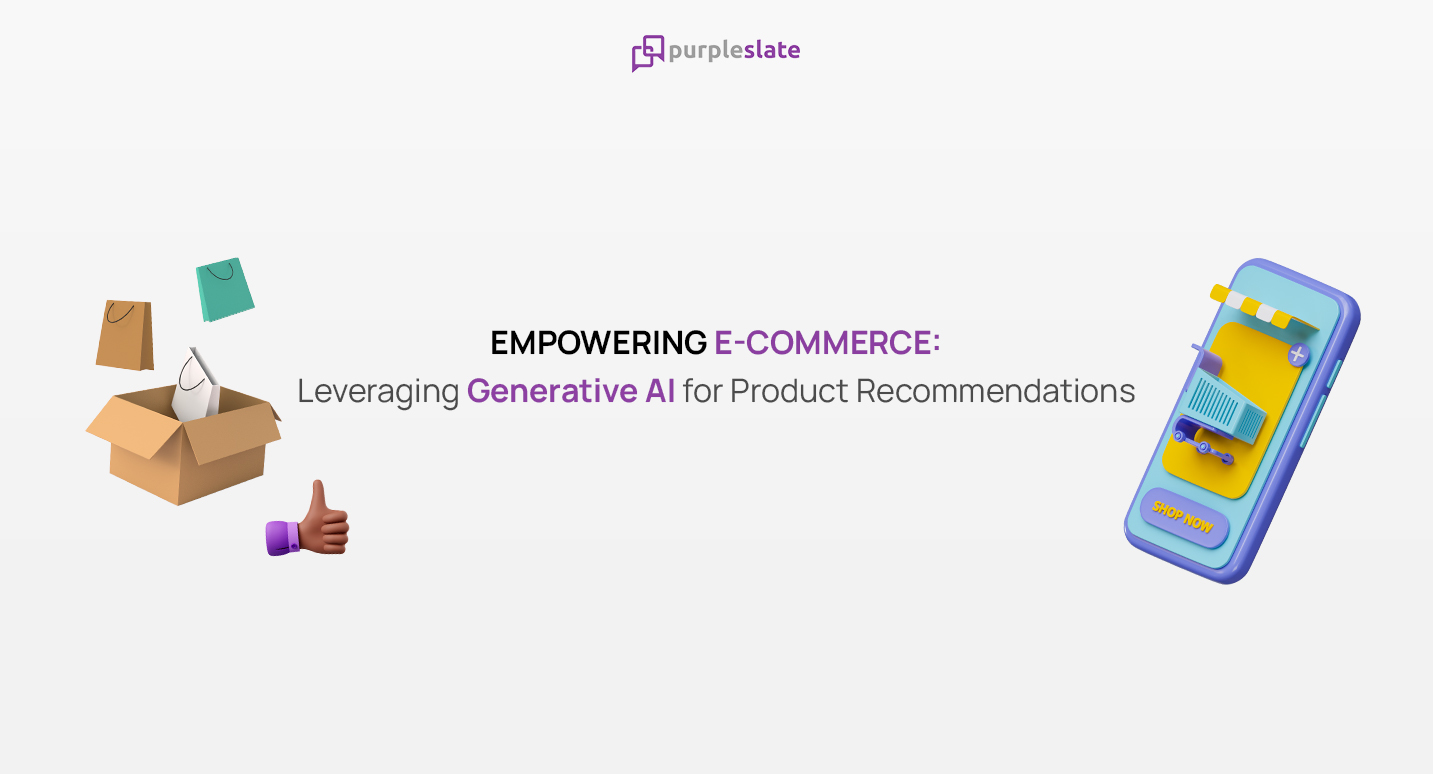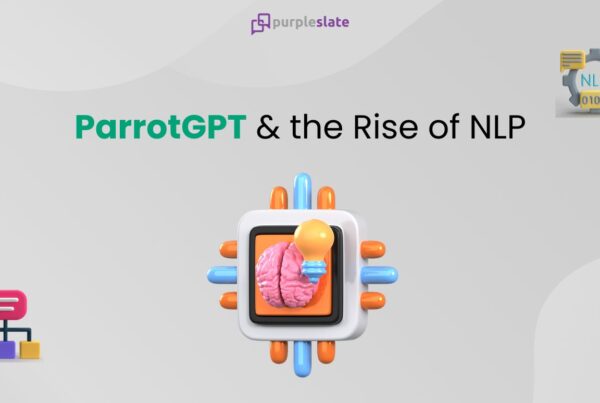
Introduction
In today’s highly competitive e-commerce landscape, personalization is key to driving sales and ensuring customer satisfaction. That’s where generative AI comes in. By leveraging the power of artificial intelligence, online retailers can now provide highly targeted and relevant product recommendations to their customers, enhancing the shopping experience and boosting conversion rates.
Generative AI algorithms analyze vast amounts of customer data, including browsing history, purchase behavior, and preferences, to generate accurate and personalized suggestions. This technology goes beyond simple demographic segmentation, allowing retailers to understand their customers on an individual level and tailor recommendations accordingly. Whether it’s suggesting complementary items, cross-selling, or upselling, generative AI enables e-commerce businesses to deliver personalized recommendations that increase engagement, customer loyalty, and ultimately, revenue.
Moreover, implementing generative AI for product recommendations can also help businesses save time and resources by automating the recommendation process. With the ability to continuously learn and adapt to customer preferences, retailers can ensure that their recommendations stay relevant over time, improving customer satisfaction and driving long-term success in the fiercely competitive e-commerce market.
The Power of Personalization in E-commerce
In the world of e-commerce, personalization has become a crucial factor in attracting and retaining customers. With so many options available to consumers, businesses need to find ways to stand out from the crowd. By providing personalized product recommendations, online retailers can create a unique shopping experience that caters to the individual needs and preferences of their customers.
Generative AI takes personalization to a whole new level. Traditional recommendation systems rely on basic demographic information or past purchase history to make suggestions. While this can be helpful, it often fails to capture the nuances and complexities of each individual customer. Generative AI, on the other hand, analyzes a wide range of data points, including browsing behavior, click patterns, and even social media activity, to build a comprehensive understanding of each customer’s preferences and interests.
By leveraging generative AI for product recommendations, e-commerce businesses can create a truly personalized shopping experience that feels tailor-made for each customer. This not only enhances customer satisfaction but also increases the likelihood of repeat purchases and word-of-mouth referrals. In a world where competition is fierce, personalization can be the key differentiator that sets businesses apart from their competitors.
How Generative AI Works in Product Recommendations
Generative AI algorithms work by analyzing vast amounts of customer data and using that information to generate accurate and personalized product recommendations. These algorithms are designed to understand patterns and trends in customer behavior, allowing them to make intelligent predictions about what products a customer is likely to be interested in.
At the core of generative AI is deep learning, a subset of machine learning that focuses on training algorithms to learn and make predictions based on large datasets. To generate personalized recommendations, generative AI algorithms use a combination of techniques, including natural language processing, image recognition, and collaborative filtering.
Natural language processing enables the algorithm to understand and analyze textual data, such as product descriptions and customer reviews. By extracting key information from these texts, the algorithm can identify common themes and preferences among customers, allowing it to make more accurate recommendations.
Image recognition, on the other hand, allows the algorithm to understand and analyze visual data. By analyzing product images and comparing them to customer preferences, the algorithm can identify visual patterns and similarities, enabling it to make recommendations based on visual appeal.
Collaborative filtering is another important technique used in generative AI. This technique involves analyzing the behavior and preferences of similar customers to make recommendations. By identifying customers with similar interests and preferences, the algorithm can predict what products a customer is likely to be interested in based on the behavior of others.
By combining these techniques, generative AI algorithms can generate highly accurate and personalized recommendations that cater to the unique preferences of each individual customer.
Benefits of Leveraging Generative AI for Product Recommendations
The benefits of leveraging generative AI for product recommendations in e-commerce are numerous. Here are some of the key advantages that e-commerce businesses can gain by implementing generative AI algorithms:
Increased Customer Engagement: Personalized product recommendations create a more engaging shopping experience for customers. By suggesting products that are relevant to their interests and preferences, businesses can capture their attention and keep them on their website for longer periods of time.
Improved Customer Satisfaction: When customers feel that a business understands their needs and preferences, they are more likely to be satisfied with their shopping experience. By providing personalized recommendations, businesses can enhance customer satisfaction and increase the likelihood of repeat purchases.
Higher Conversion Rates: Personalized recommendations have been shown to significantly increase conversion rates. By suggesting products that are highly relevant to a customer’s interests, businesses can increase the likelihood of a purchase being made.
Increased Cross-Selling and Upselling Opportunities: Generative AI algorithms can identify complementary products and suggest them to customers, increasing the likelihood of cross-selling. Additionally, by analyzing customer behavior and preferences, these algorithms can identify opportunities for upselling, suggesting higher-priced products that customers are likely to be interested in.
Time and Resource Savings: Automating the recommendation process with generative AI algorithms can save businesses time and resources. Once the algorithms are trained and implemented, they can continuously learn and adapt to customer preferences, ensuring that recommendations stay relevant over time.
Overall, leveraging generative AI for product recommendations can lead to increased customer engagement, improved customer satisfaction, higher conversion rates, and ultimately, increased revenue for e-commerce businesses.
Case Studies of Successful E-commerce Businesses Using Generative AI
Several successful e-commerce businesses have already implemented generative AI algorithms for product recommendations, reaping the benefits of increased customer engagement and higher conversion rates. Let’s take a look at a few case studies:
Amazon
As one of the largest e-commerce platforms in the world, Amazon has been at the forefront of leveraging generative AI for product recommendations. The company’s recommendation system, known as “Amazon Personalize,” uses advanced machine learning algorithms to analyze customer behavior and make personalized product suggestions.
By analyzing a customer’s browsing history, purchase behavior, and preferences, Amazon Personalize can accurately predict what products a customer is likely to be interested in. This not only enhances the shopping experience for customers but also increases the likelihood of a purchase being made. According to Amazon, their recommendation system has contributed to a significant increase in sales and customer satisfaction.
Netflix
Netflix, the popular streaming platform, also uses generative AI algorithms to make personalized content recommendations to its users. By analyzing user behavior, such as viewing history and ratings, Netflix’s recommendation system can accurately predict what movies and TV shows a user is likely to enjoy.
This personalized recommendation system has been instrumental in driving user engagement and retention for Netflix. By suggesting content that aligns with a user’s preferences, the platform keeps users coming back for more, leading to increased customer loyalty and higher subscription rates.
Spotify
Music streaming platform Spotify is another example of a business that has successfully implemented generative AI for product recommendations. Spotify’s recommendation system analyzes user listening history, favorite genres, and even mood to generate customized playlists and music recommendations.
By providing users with personalized music recommendations, Spotify keeps users engaged and encourages them to spend more time on the platform. This, in turn, leads to increased subscription rates and higher revenue for the company.
These case studies demonstrate the power of generative AI in driving customer engagement, satisfaction, and revenue for e-commerce businesses. By leveraging this technology, businesses can create a truly personalized shopping experience that keeps customers coming back for more.
Implementing Generative AI for Product Recommendations
Implementing generative AI for product recommendations can seem like a daunting task, but with the right approach, businesses can successfully integrate this technology into their e-commerce platforms. Here are some best practices to consider:
Define Clear Objectives: Before implementing generative AI algorithms, businesses should define clear objectives and goals. What specific outcomes are they looking to achieve? By clearly defining objectives, businesses can ensure that the implementation process is focused and aligned with their overall strategy.
Gather and Clean Data: Generative AI algorithms rely on high-quality data to make accurate recommendations. Businesses should gather as much relevant data as possible, including browsing history, purchase behavior, and customer preferences. It’s important to ensure that the data is clean and free from any errors or inconsistencies.
Choose the Right Algorithm: There are many different generative AI algorithms available, each with its own strengths and weaknesses. Businesses should carefully evaluate their options and choose an algorithm that best fits their specific needs and objectives. It’s also important to consider factors such as scalability and computational requirements when selecting an algorithm.
Train and Test the Algorithm: Once an algorithm has been chosen, businesses need to train it using their data. This involves feeding the algorithm with historical data and allowing it to learn patterns and trends. After training, businesses should test the algorithm to ensure that it is generating accurate and relevant recommendations.
Continuously Monitor and Improve: Generative AI algorithms are not a one-time solution. To ensure that recommendations stay relevant over time, businesses need to continuously monitor and improve their algorithms. This involves regularly updating the training data, retraining the algorithm, and incorporating feedback from customers.
By following these best practices, businesses can successfully implement generative AI for product recommendations and reap the benefits of increased customer engagement and higher conversion rates.
Overcoming Challenges in Leveraging Generative AI for Product Recommendations
While generative AI holds great promise for e-commerce businesses, there are also challenges that need to be addressed. Here are some common challenges and ways to overcome them:
Data Privacy and Security: Collecting and analyzing customer data raises concerns about privacy and security. Businesses need to ensure that they have proper data protection measures in place and comply with relevant regulations, such as GDPR. Transparency and clear communication with customers regarding data usage can also help build trust and alleviate concerns.
Algorithm Bias: Generative AI algorithms are only as good as the data they are trained on. If the training data is biased, the algorithm may make recommendations that perpetuate stereotypes or discrimination. To overcome this challenge, businesses need to carefully curate their training data and regularly audit and evaluate the algorithm for bias.
Scalability and Computational Requirements: Generative AI algorithms can be computationally intensive, especially when dealing with large datasets. Businesses need to ensure that they have the necessary computational resources to train and run these algorithms efficiently. Cloud-based solutions and distributed computing can help address scalability challenges.
User Adoption and Acceptance: Some customers may be skeptical or resistant to personalized product recommendations. Businesses need to educate their customers about the benefits of personalized recommendations and address any concerns they may have. Providing transparency and control over the recommendation process can help increase user acceptance.
By proactively addressing these challenges, businesses can ensure a smooth and successful implementation of generative AI for product recommendations, maximizing the benefits and minimizing potential risks.
The Future of Generative AI in E-commerce
As technology continues to advance, the future of generative AI in e-commerce looks promising. Here are some trends and developments to watch out for:
Real-Time Recommendations: As generative AI algorithms become faster and more efficient, real-time recommendations will become more prevalent. Businesses will be able to provide customers with personalized suggestions as they browse their website, enhancing the shopping experience and increasing the likelihood of a purchase.
Voice-Activated Recommendations: With the rise of voice-activated assistants like Amazon Alexa and Google Assistant, voice-activated recommendations will become more important. Generative AI algorithms will need to adapt to understand and respond to voice commands, providing personalized recommendations through voice-activated devices.
Augmented Reality (AR) Recommendations: AR technology has the potential to revolutionize the way customers shop online. Generative AI algorithms can analyze customer preferences and recommend AR experiences that allow customers to visualize products in their own environment before making a purchase.
Ethical AI: As concerns around algorithm bias and data privacy continue to grow, businesses will need to prioritize ethical AI practices. This includes ensuring fairness and transparency in algorithmic decision-making, protecting customer data, and addressing any biases or discrimination in recommendations.
The future of generative AI in e-commerce is bright, and businesses that embrace this technology will have a competitive edge in the market.
Harnessing the Potential of Generative AI for E-commerce Success
In conclusion, generative AI is transforming the way e-commerce businesses provide product recommendations to their customers. By leveraging the power of artificial intelligence, businesses can create personalized shopping experiences that increase customer engagement, satisfaction, and conversion rates.
Generative AI algorithms analyze vast amounts of customer data, allowing businesses to understand their customers on an individual level and tailor recommendations accordingly. This technology goes beyond simple demographic segmentation, considering browsing behavior, preferences, and even social media activity.
In this ever-evolving e-commerce landscape, businesses that harness the potential of generative AI for product recommendations will be well-positioned o succeed. By providing personalized and relevant suggestions, businesses can create a shopping experience that keeps customers coming back for more, driving revenue and customer loyalty.
Tailored product recommendation for customers is a function of data and simple consumer behavior. Building bespoke product recommenders start from understanding the buying patterns of the customer along with other variables. Get in touch with us to build a customized product recommender as part of our service offerings with a lot of features.




